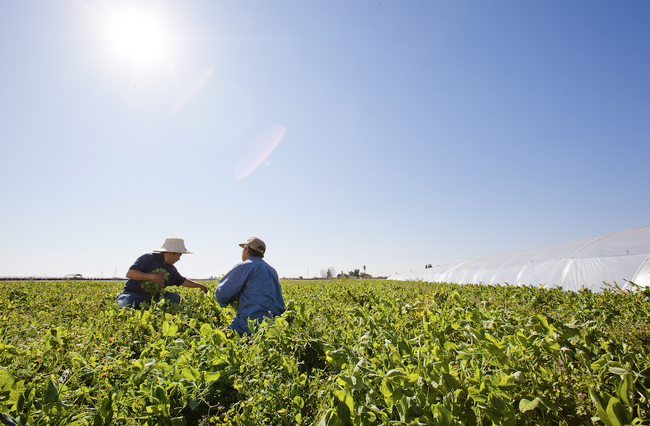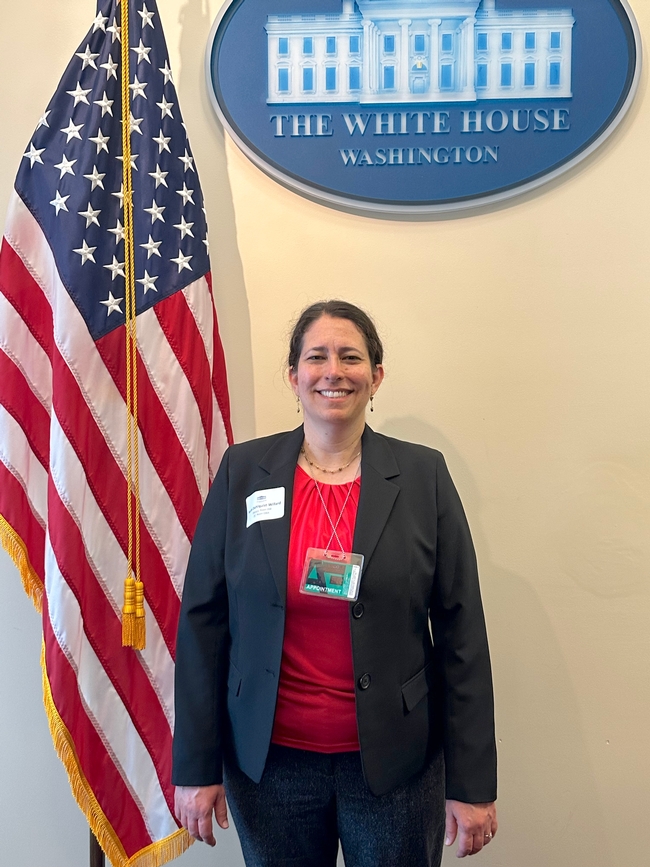Posts Tagged: y
Zeroing in on Soil Invertebrate Communities
You might call it earth-shattering, but better, "an eye-opener about soil compositions." Associate professor Kyle Wickings of the Department of...

This is an image from Kyle Wickings' soil arthropod ecology lab at Cornell University.
A Feast for the Sensations: An Artist’s Garden in Victoria
We spent a most enjoyable week in Victoria, British Columbia this July. Our Airbnb was an old converted church called The Fernwood Church, owned by a French-born artist. There are articles online regarding its restoration.
Upon arrival, I was immediately captivated by the eclectic garden. Its a very small lot and the garden is just a few feet wide, wrapping around the church. And yet, there was so much to see and enjoy. Everywhere, we saw handmade water features - with soothing bubbling, trickling or cascading water sounds. The owner collects driftwood from local beaches and paints them, creating structures with cement, tile, rocks, metal, shells, etc. Many are re-purposed household items. One picture below shows his water feature that incorporates kitchen utensils including teaspoons which slowly twirl around as the water trickles down to a glass-studded cement bowl. Virtually all the garden features are run by solar energy.
Meandering walkways lead the visitor to various meditation spots. Every part of the garden was well-utilized and filled with eye candy. There was so much attention to detail. All the plants were healthy and well cared for. I especially liked the brilliant purple and highly scented lavender. We made sure to spend time every day soaking in the beauty and wonder of this peaceful little paradise.
The last picture was included if you're wondering what the interior looks like. The Fernwood Church was very comfortable, airy, filled with artwork, and not creepy. However, the highlight of our Airbnb stay was most definitely the artist's bohemian garden. What a delightful feast for the senses!

photos by Cindy Yee

church 2

church 3

church 4

church 5

church 6

church 7

church 10
White House Summit explores impact of extreme heat, ways to adapt
UC ANR Small Farms Network supports small-scale and underserved farmers impacted by extreme heat
Ruth Dahlquist-Willard, interim director for the UC Sustainable Agriculture Research and Education Program, joined more than 100 participants from across the country at the first-ever White House Summit on Extreme Heat. Community representatives and practitioners met with federal agency representatives and Biden Administration officials to discuss successful locally tailored, community-driven practices to adapt to extreme heat as well as available federal resources.
According to the National Oceanic and Atmospheric Administration or NOAA, summer 2024 was California's warmest summer on record. As California's climate is changing, episodes of extreme heat are becoming more common, leading to substantial health, economic and ecosystem impacts.
In the agricultural sector, extreme heat events can cause heat illness in farmworkers, crop losses and changes in pest pressure. California crop losses due to drought, wildfire and heat were estimated at $239 million in 2023.
Disaster relief funds are available to help growers recover from lost production due to extreme heat. Since 2021, the UC ANR Small Farms Network has connected small-scale farmers with over $5.8 million in direct-to-producer relief funds for losses related to drought, flooding and other extreme weather events.
To further support small-scale farmers in adapting to the changing climate, Dahlquist-Willard and the Small Farms Network are evaluating how the extreme heat of summer 2024 impacted farmers. Farmers reported anecdotal observations that included:
- Shifting work hours to cooler parts of the day
- Closing farm stands and farmers markets due to extreme heat
- Crops ripening more quickly than expected, impacting harvesting and packing schedules
- Poor fruit set due to extremely high temperatures
The team is working to determine what damage symptoms on small-acreage California specialty crops can be attributed to extreme heat based on scientific literature and assessments from UC ANR colleagues. Understanding the impact of extreme heat on the farming community can help inform research and policy, ultimately equipping farmers with strategies to adapt to extreme heat events.
“It was inspiring to meet with leaders from around the nation who are working to support communities impacted by extreme heat and learn about the creative solutions they are implementing,” said Dahlquist-Willard. “The challenges faced by these communities make it all the more important to continue to work against climate change by reducing greenhouse gas emissions, as well as to develop new methods and resources to mitigate the effects of extreme heat and other climate impacts.”
The Extreme Heat Summit highlighted the Biden-Harris Administration's investments in climate reliance and put forth an Extreme Heat Call to Action calling upon public and private sectors to prepare for future extreme heat events. Communities and governments interested in participating are asked to use all available tools to protect people from extreme heat. Approaches and tools which could be used to protect people and resources from extreme heat are highlighted in the U.S. Climate Resilience Toolkit and the National Heat Strategy. Submissions for the Call to Action will be accepted through Nov. 1, 2024.
Further reading:
Heat Illness Prevention, UC Davis Western Center for Agricultural Health and Safety
Pathak et al., 2018. Climate Change Trends and Impacts on California Agriculture: A Detailed Review
UC's New Climate Action Goals: Frequently Asked Questions
Want to Learn More about Mosquitoes and Ticks?
Want to learn more about mosquitoes and ticks? UC Davis doctoral student and medical entomologist Carla-Cristina “CC” Melo Edwards of...

UC Davis doctoral student and medical entomologist CC Edwards dragging for ticks at Bodega Bay.
An Urban Forest Council of Our Own
In my previous Master Gardener Blog, I took a “wonderful walk in the woods”. There I described the beauty, wonder and very practical creation of urban forests in Surrey, British Columbia and other Canadian cities. While researching this topic, I came upon a very exciting discovery: We have our own California Urban Forests Council!
The California Urban Forests Council, (CaUFC), was founded in 1968--the first urban forest council in the country. They are professionals associated with municipalities and public works, urban planning and design, arboriculture and the nursery industry, as well as community-based and public health organizations. The membership is widespread across a broad range of needs and visions.
This dedicated group advances smart investment in urban and community trees, parks and green spaces through outreach and education, as well as community-based activities and collaborative action. Their efforts support successful local, regional and statewide urban forestry programs, projects, often with other organizations. They also create and disseminate educational materials, offering research and professional expertise to encourage and empower California residents to participate in urban greening and forestry. They accomplish their efforts by working with local, state and regional leaders to improve public policy and support for urban and community forestry. In addition, they create new and continue existing public funding resources which support the management of trees and green spaces throughout the state.
As their Mission states, they “envision thriving and prosperous California communities transformed by healthy trees and green spaces: We advance smart investment in green infrastructure through education and outreach, community-based activities and collaborative actions.”
The Council is made up of seven regional councils: The Bay Area Urban; Sacramento Valley; San Joaquin; Inland; San Diego Regional; Street Tree; and Central Coast Urban Forest Councils. Each provides essential expertise and assistance to their respective regions. They also organize events and activities to help create responsive and beautiful communities. Among other activities, these councils are there to answer questions, organize workshops, host conferences, help plant trees, aid in professional development, fundraise, and host Arbor Day events.
As part of the outreach and educational efforts, the organization produces a monthly newsletter online. It's easy to sign up for this exciting resource, and what a delight to receive it in your inbox. Through the newsletter, one can keep up with the Councils' activities and there are always interesting and important volunteer opportunities just waiting to be had. Once again, California has led the way toward imaginative and important work. As for this blogger, just poking around while doing research for a blog has led to another valuable discovery.



